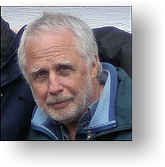
|
||||















Michael Erlewine - Founder/Director
 Michael Erlewine is an internationally-known astrologer with over 40 years of experience as an author, teacher, and counselor. Aside from founding Matrix Software (the first astrological software company), Erlewine is also an Internet content pioneer, founding sites like AllMusic.com, AllMovie.com, AllGame.com, StarTypes.com, and many others. He has authored more than 22 books on astrology (available on Amazon.com) and over a dozen books on music and film. You can Google —Michael Erlewine— or go to —http://www.startypes.com/main_bio.html— for more details. Michael Erlewine is an internationally-known astrologer with over 40 years of experience as an author, teacher, and counselor. Aside from founding Matrix Software (the first astrological software company), Erlewine is also an Internet content pioneer, founding sites like AllMusic.com, AllMovie.com, AllGame.com, StarTypes.com, and many others. He has authored more than 22 books on astrology (available on Amazon.com) and over a dozen books on music and film. You can Google —Michael Erlewine— or go to —http://www.startypes.com/main_bio.html— for more details.Erlewine can be reached at Michael@erlewine.net and through the websites www.StarTypes.com and www.AstrologySoftware.com.
Stephen Erlewine - Head-Programmer
 Stephen began the study of astrology in 1965, opened Circle Books, an astrological bookstore in 1968, and began publishing the Circle Books astrological calendar in 1969. In 1972 he published the Circle Book of Charts, a collection of charts for famous individuals over centuries. For centuries where no where no ephemeris was available, he had the help of one of the earliest astrological computer programs being developed by Thomas Shanks. In 1979 he bought a Commodore Pet and taught himself to program. He soon was working on code for Matrix which was started by his brother, Michael. In 1980 he started working full time for Matrix. Stephen began the study of astrology in 1965, opened Circle Books, an astrological bookstore in 1968, and began publishing the Circle Books astrological calendar in 1969. In 1972 he published the Circle Book of Charts, a collection of charts for famous individuals over centuries. For centuries where no where no ephemeris was available, he had the help of one of the earliest astrological computer programs being developed by Thomas Shanks. In 1979 he bought a Commodore Pet and taught himself to program. He soon was working on code for Matrix which was started by his brother, Michael. In 1980 he started working full time for Matrix.Stephen can be reached at rserlewine@gmail.com
Johan Kruger - Programmer
 Johan's love for music is nearly as great as his love for tennis. If you don't find him behind the computer, you can be sure he is on the tennis courts around Michigan or behind the keys of his musical instruments. Johan's love for music is nearly as great as his love for tennis. If you don't find him behind the computer, you can be sure he is on the tennis courts around Michigan or behind the keys of his musical instruments.For the last 10 years, he has been programming for Matrix, either from the office or from his home near Big Rapids. Johan can be reached at johkru.matrix@gmail.com
Martin Machnowski -
Graphic Designer/Web Master  Martin was born in Caracas, Venezuela, a long time ago. He moved to the United States in January 1994. He began working at Matrix Software in May of 1998 as a Graphic Designer. He now works on catalogs, logos, packages, web pages, etc. Martin is married and has one daughter and granddaughter. Martin was born in Caracas, Venezuela, a long time ago. He moved to the United States in January 1994. He began working at Matrix Software in May of 1998 as a Graphic Designer. He now works on catalogs, logos, packages, web pages, etc. Martin is married and has one daughter and granddaughter.Martin can be reached at Martin.MatrixSoftware@Gmail.com or visit his web site http://www.machnowski.com/martin/
Tanya Guild - Customer Service/Sales
 Tanya has been in the customer service/sales business for over 13 years. Currently the office manager for Matrix Software. Tanya has been in the customer service/sales business for over 13 years. Currently the office manager for Matrix Software.I have two wonderful children both going through their teenage years right now. One is a youth hockey player and the other is in dance. Tanya can be reached at order@astrosoftware.com
Drew Rees - Technical Support
 Drew is originally from the U.K. but has lived in the U.S. and Canada as well. Drew is originally from the U.K. but has lived in the U.S. and Canada as well.He has made a career out of helping people with computer issues for 16 years and has been using computers since he was 13. Drew still remembers his first computer a Tandy 1000hx with fond memories. Drew is married to a wonderful wife, has two young children and 15 horses. Drew can be reached at matrixsoftware.support@gmail.com
Michael Anne Erlewine -
Customer Service/Shipping  Michael Anne, aside from her part-time work with Matrix, is a singer/songwriter and an artist, well known for her large murals throughout Michigan. She was also two-time state champion cross country runner, and attended the University of Michigan on a track scholarship. Michael Anne, aside from her part-time work with Matrix, is a singer/songwriter and an artist, well known for her large murals throughout Michigan. She was also two-time state champion cross country runner, and attended the University of Michigan on a track scholarship. Michael Anne can be reached at michaelanne.erlewine@gmail.com |
||||
